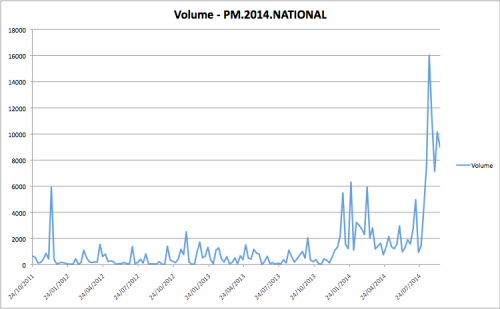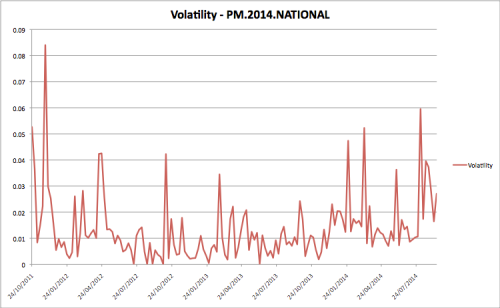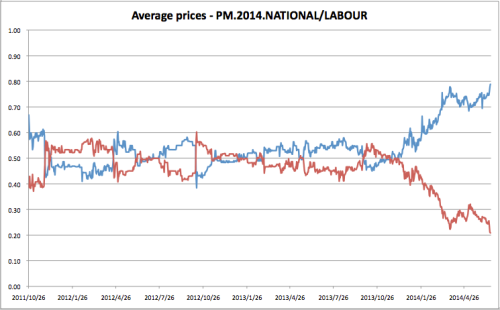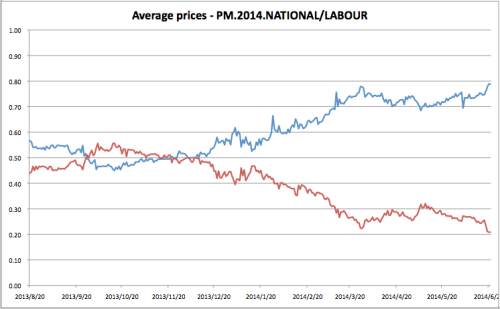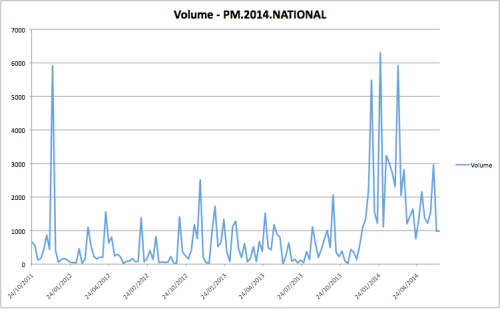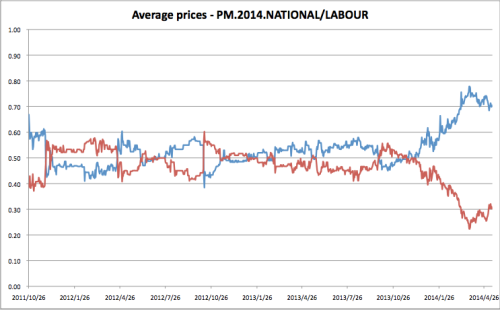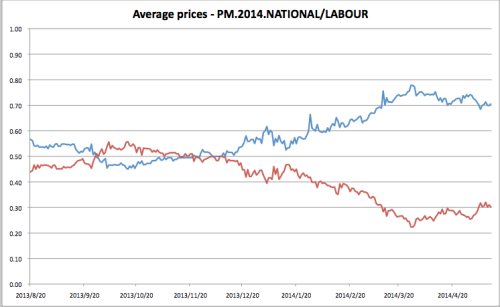Following on from previous posts, another short update on the iPredict stocks for National and Labour to win the 2014 election.
Daily average trade prices for National broke through the 80c barrier on 26 June, and Labour went below 20c on the same day. The prices were reasonably stable around those levels for about six weeks until 13 August 2014 when the Dirty Politics scandal broke and National took a steep hit. Average daily prices for National were below 70c for several days, and bottomed out at about 64c on 22 August, well before Collins’ resignation on 30 August. The stocks have since rebounded, with National today trading for around 84c, an all-time high.
While there was obvious movement, most likely attributable to fear over the fallout from the Dirty Politics scandal, it was short lived. As mentioned in the previous post the clock is running out for Labour, which needs to find some sort of game-changer, and there is less and less time left before the election for them to do so.
Graph of prices below:
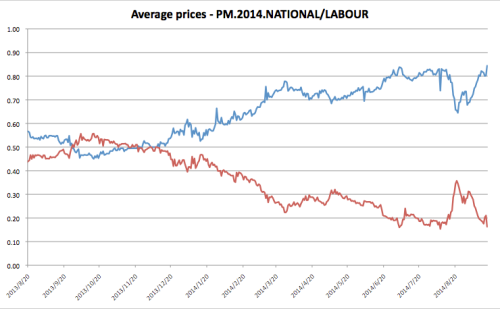
Daily average trade price, 2014 election winner stocks on iPredict for National (blue) and Labour (red).
Since Dirty Politics was released trading volumes and volatility are up significantly. During the last month there have been over 7,100 trades (National and Labour combined), and total volume was over 115,000. Since opening on 26 October 2011 the total volumes traded are about 195,000 for National and 173,000 for Labour, so almost 1/3 of total volume traded in the last 3 years has been in the last month. The stocks definitely aren’t moving about on small volumes.
The consensus seems to be that this isn’t going to be a particularly close election.
